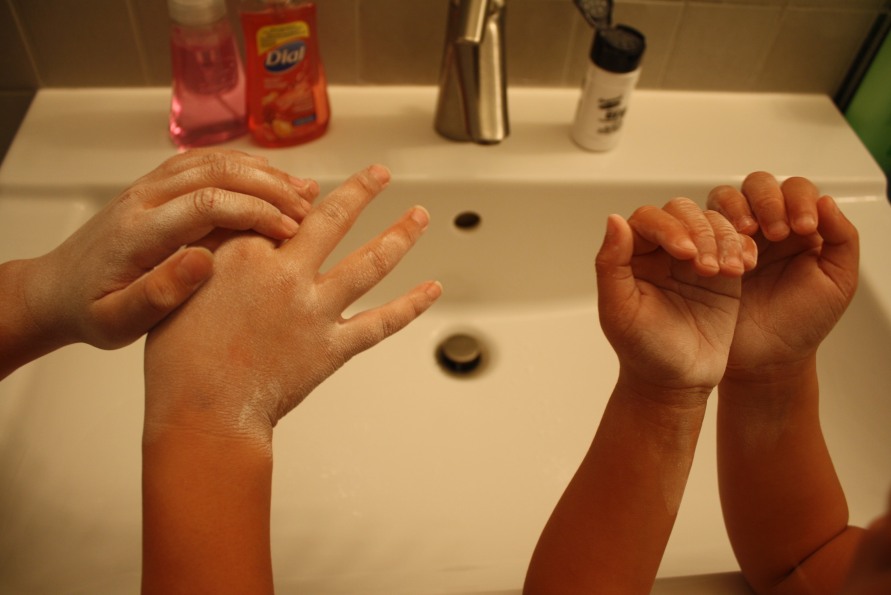Last night, I decided I wanted to have a creamy dessert. I opened the freezer door, reached in and grabbed a package. Opening the refrigerator door, I took out a container of almond milk. Dumping the contents of the package into my blender and adding the almond milk, I began to blend the creamy dessert.
Once blended, I poured the contents into a bowl and took my seat on the couch to enjoy my treat. Tasting the first spoonful of the ingredients, I realized it didn’t taste like blueberries! The bowl was a green concoction! What happened?!
When I reached into the freezer, I had grabbed a bag of kale instead of blueberries. Laughing out loud at my mistake, I sat back down and enjoyed my Kale smoothie.
Above all, the lesson to this story is, turn on the light in the kitchen before you snatch a bag out of the freezer. Then read the label before you deposit the contents into the blender. Most important of all, have a sense of humor, laugh at yourself when you mess up!
What is kale?

Kale is a leafy, dark green vegetable and at times may have some purple coloration. It is filled with nutrients and flavor. For instance, kale belongs to the same family as broccoli, collard greens, cabbage, and cauliflower. This group of vegetables are full of vitamins and minerals. To me, kale has a mild flavor, not pungent as some greens can be.
Benefits of kale
Kale is full of vitamins and minerals, including:
- Vitamin A
- B vitamins
- Vitamin C
- All important vitamin K for blood clotting
In addition, kale is rich in, calcium, potassium, magnesium, manganese, iron, copper, and phosphorus. It also supplies energy-supporting B vitamins, some plant-based omega-3 fatty acids and plant protein. It also has a good amount of fiber to help keep your bowel movements regular. Kale contains antioxidants that help prevent cell damage and may also help protect against cancer. Kale supports the immune system, heart and eye health.
For instance, kale’s rich contents aids in the health and reproduction of skin and brain cells. Kale is additional a potent source of antioxidants known to reduce inflammation, a trigger of premature aging and disease. One cup of kale is filled with 10% of the RDA recommendation of omega-3 fatty acids.
Our friend, kale furthermore, improves blood sugar, insulin and lipid levels in sufferers of type 2 diabetes.
List of the dirty dozen 2020 the downside of fruits and vegetables
- Strawberries
- Spinach
- Kale
- Nectarines
- Apples
- Grapes
- Peaches
- Cherries
- Pears
- Tomatoes
- Celery
- Potatoes
I’m a strong advocate of eating organic as much as possible. Eating clean is a choice and can be expensive. However, by eliminating junk food such as cokes, candy, potato chips, and sugary desserts, as well as tobacco products, you will see that you have the money to make healthier choices.
In other words, make sure that you clean your food products well. Rinsing is not enough. There are organic food cleaners that you can buy at your local grocery store. Using food cleaning products helps to ensure that your food is cleaner and pesticides are eliminated or at the very least reduced.
Growing your own food organically is a great alternative to buying organic foods. Many neighborhoods are having community gardens. My neighborhood is considering doing just this very thing!
How to eat kale
I like to eat vegetarian pizza. Often times, I will through a handful of kale on my pizza for extra nutrients. As of last night, I now enjoy a kale smoothie. This smoothie consist of kale blended with a small amount of almond milk. Let’s look at some other ways to eat kale.

Adding kale to your diet is easy. Mix a cup of kale into your favorite soup recipe. By adding this power packed green to your soup, you have given the recipe a boost in nutrients.
If you want to snack on something crispy, roast fresh kale in the oven.
Preheat the oven to 300 degrees
Each batch takes about 16-17 minutes to cook. Make as many batches as you want.
Prepare the kale by washing and rinsing the leaves to remove contaminates. Remove any thick/tough stems from the kale.
Next, place the kale on a cookie sheet spreading it out evenly. Drizzle with olive oil and add a touch of sea salt if you want the taste of salt.
Once baked for 16-17 minutes, take out of the oven and let the chips cool.
If you don’t want to take the time to make these chips from scratch, you can buy them pre-made.
Be brave! Add kale to all your favorite recipes! You will be pleasantly surprised!

If you take blood-thinning medicine (such as anticoagulant or anti-platelet drugs), you may need to limit vitamin K foods. It’s well known, vitamin K can affect how these medicines work. Realize that vitamin K clots the blood.
















 Part of my nursing career, I worked in the mental health department for the Veterans Administration Medical Center. Actually, I worked with mental health patients throughout my long nursing career. I have many interesting stories from the mental health department, but this is not the kind of nuts I’m referring to. And, I’m not going into the nuts and bolts of mental health.
Part of my nursing career, I worked in the mental health department for the Veterans Administration Medical Center. Actually, I worked with mental health patients throughout my long nursing career. I have many interesting stories from the mental health department, but this is not the kind of nuts I’m referring to. And, I’m not going into the nuts and bolts of mental health.

 Nut oils also are a good source of healthy nutrients. However, they lack the fiber found in whole nuts.
Nut oils also are a good source of healthy nutrients. However, they lack the fiber found in whole nuts.











